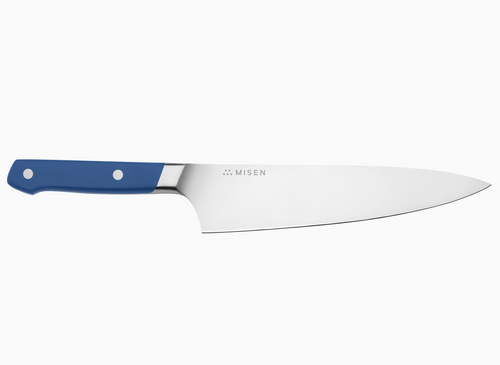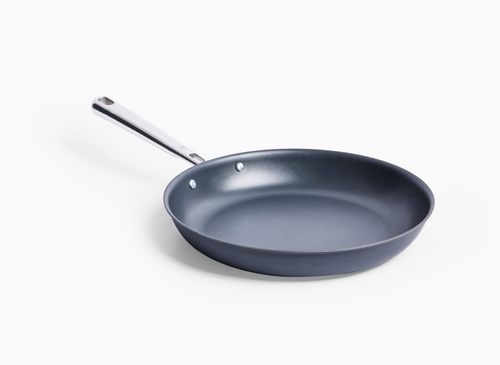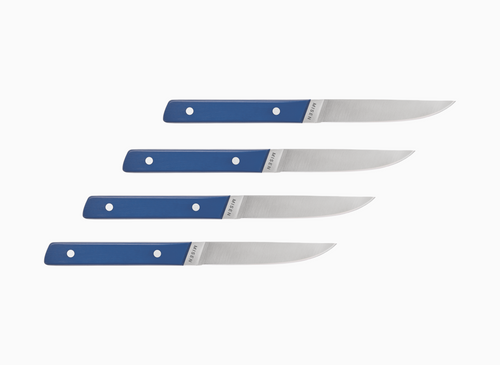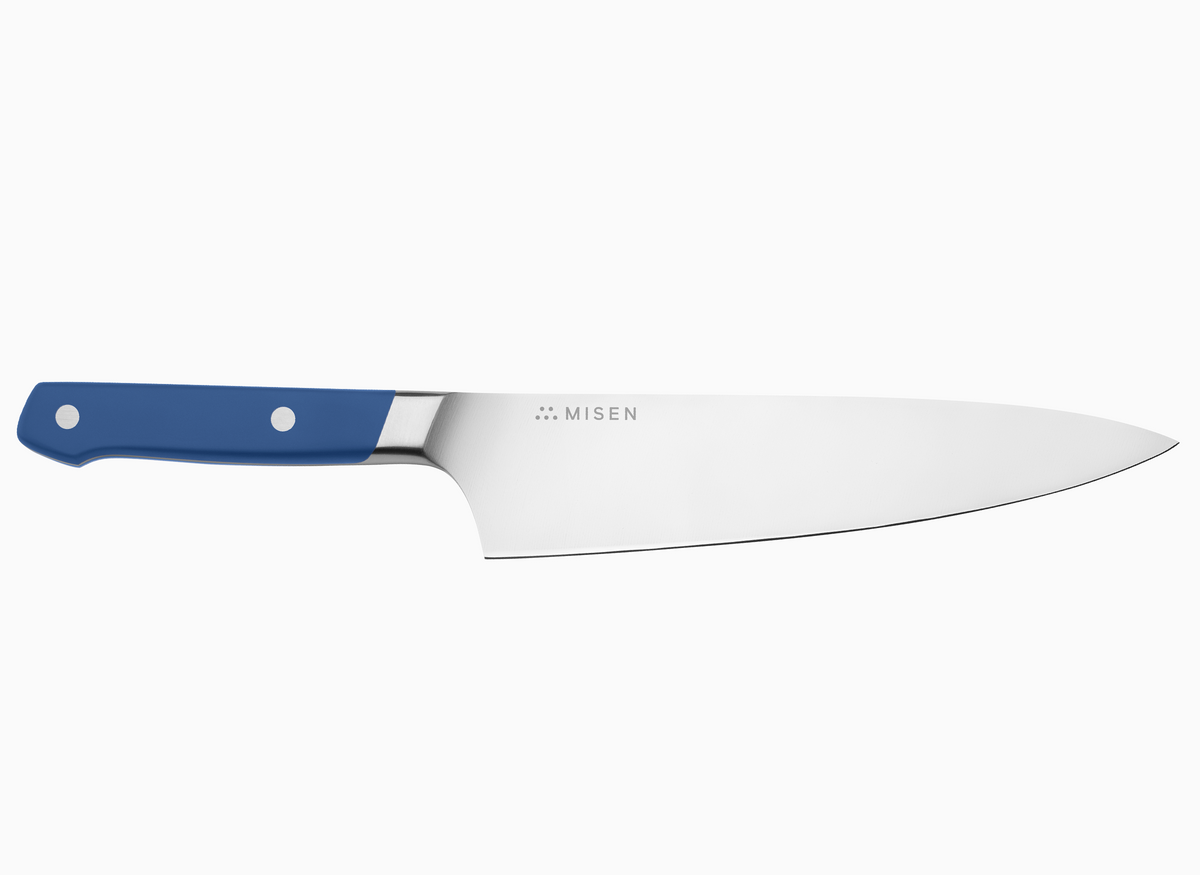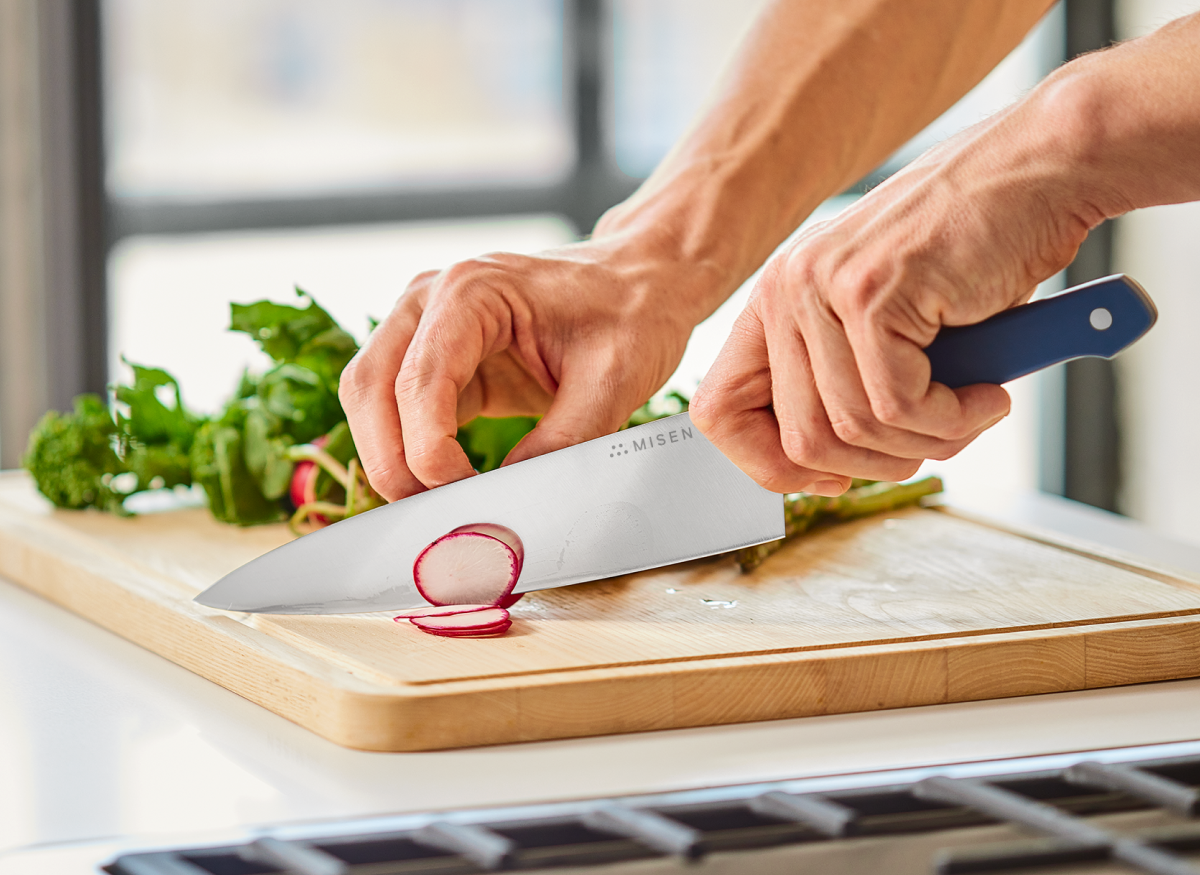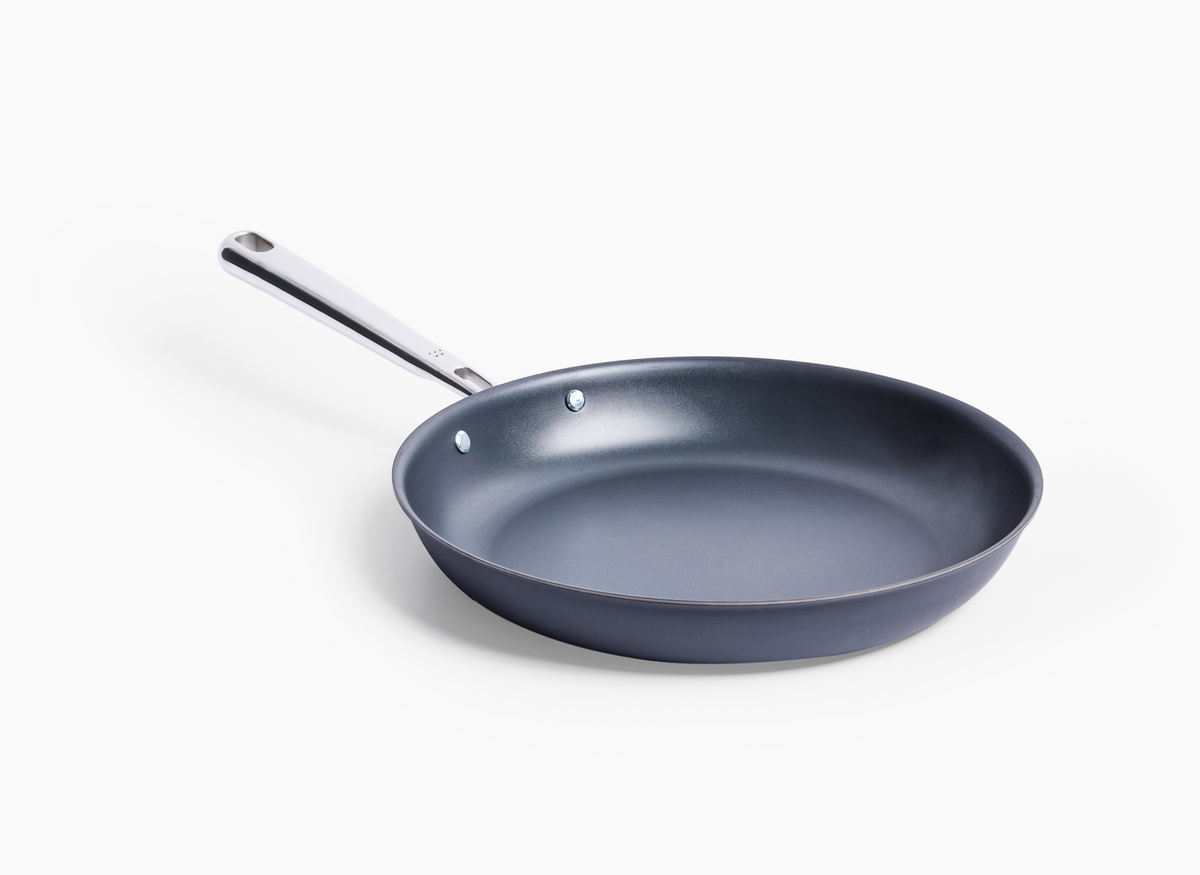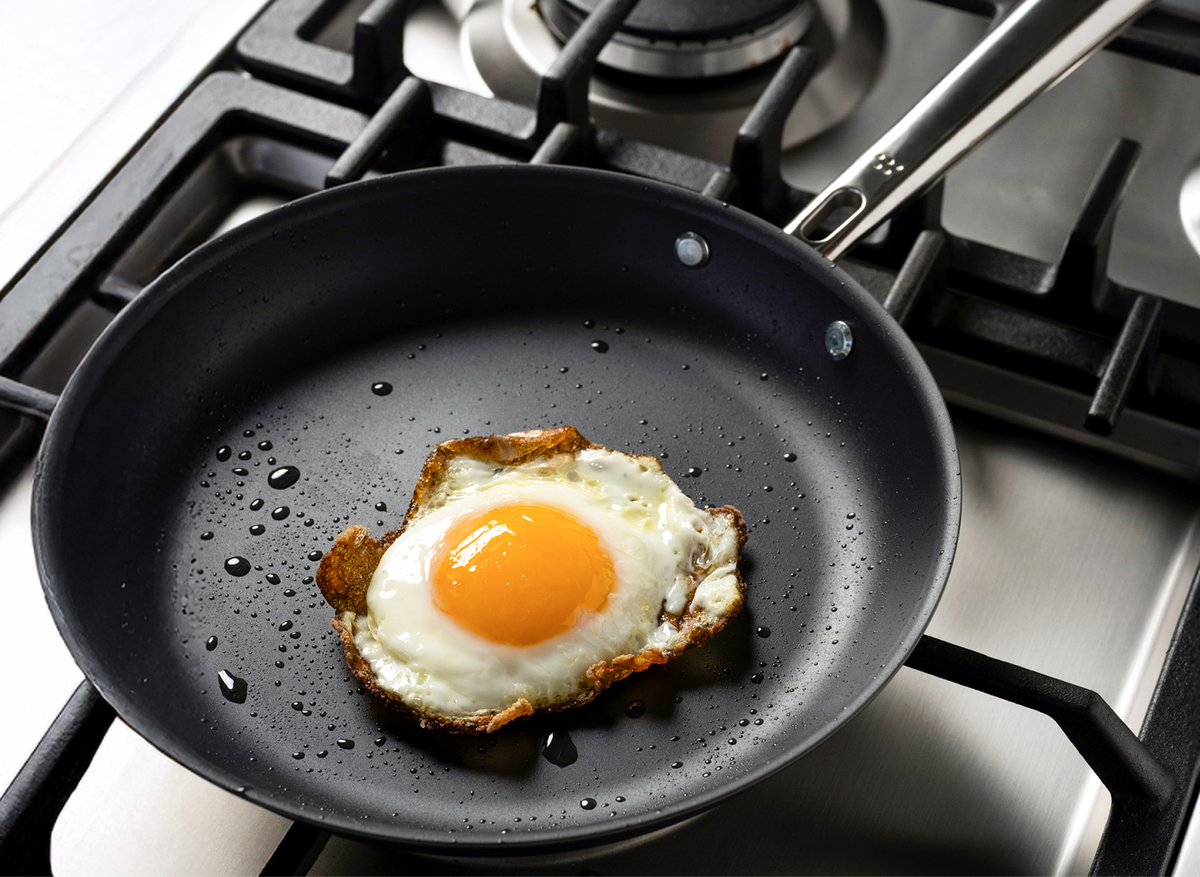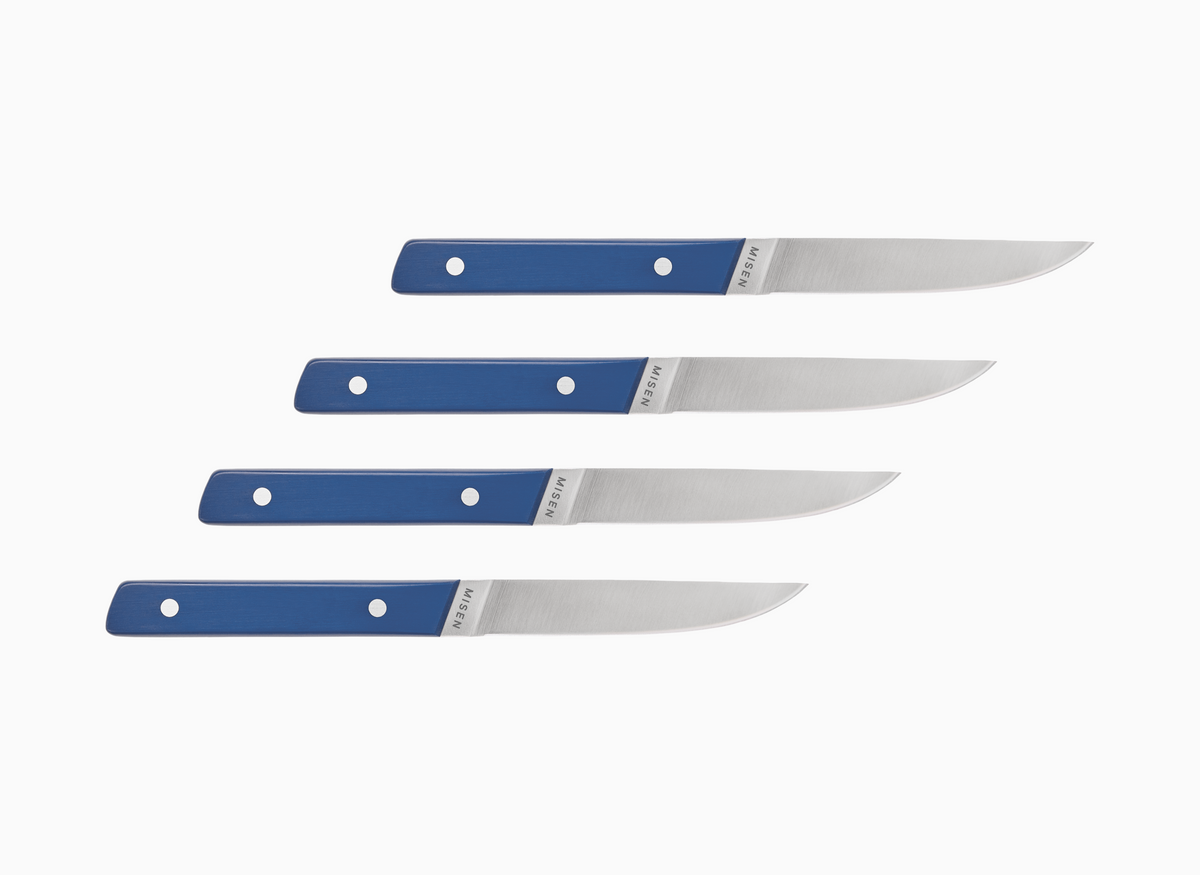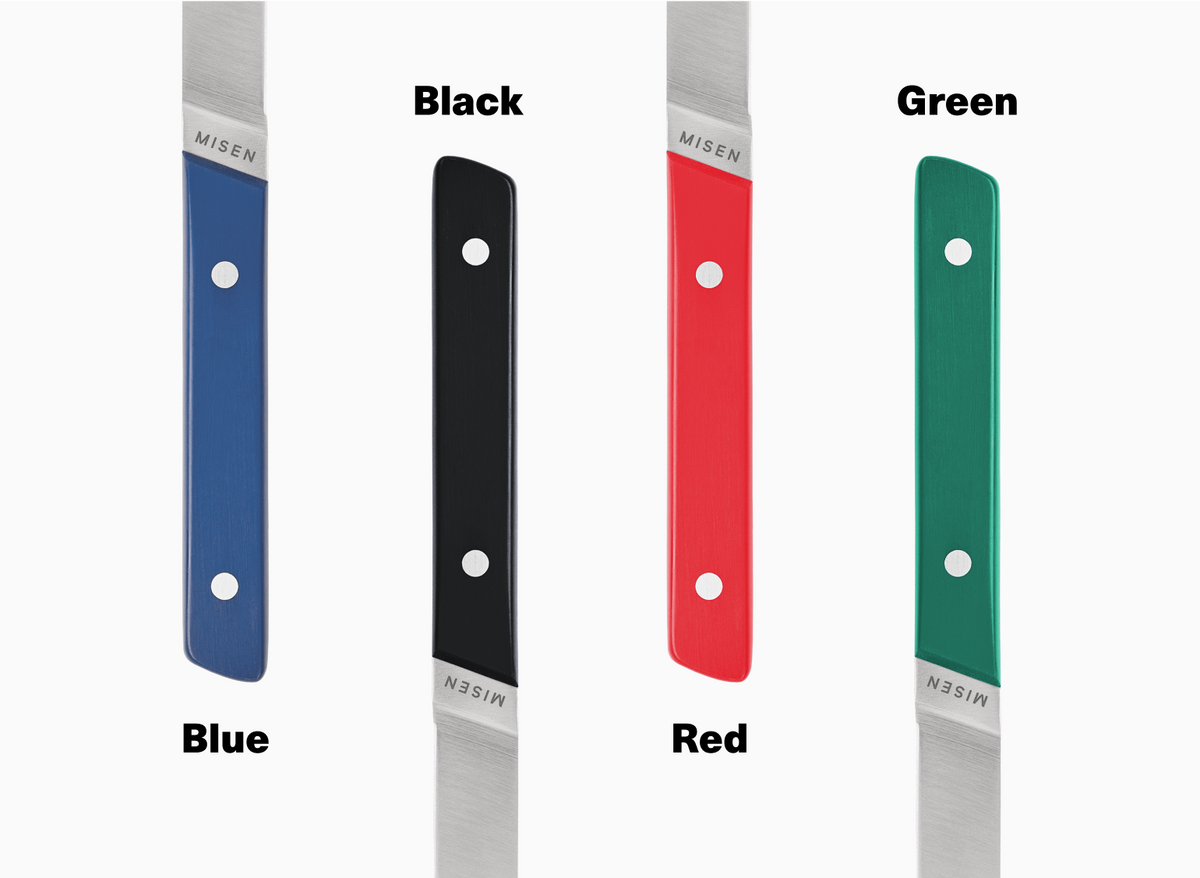Is Ceramic Cookware Safe? Comparing Carbon Non-Stick to Ceramic
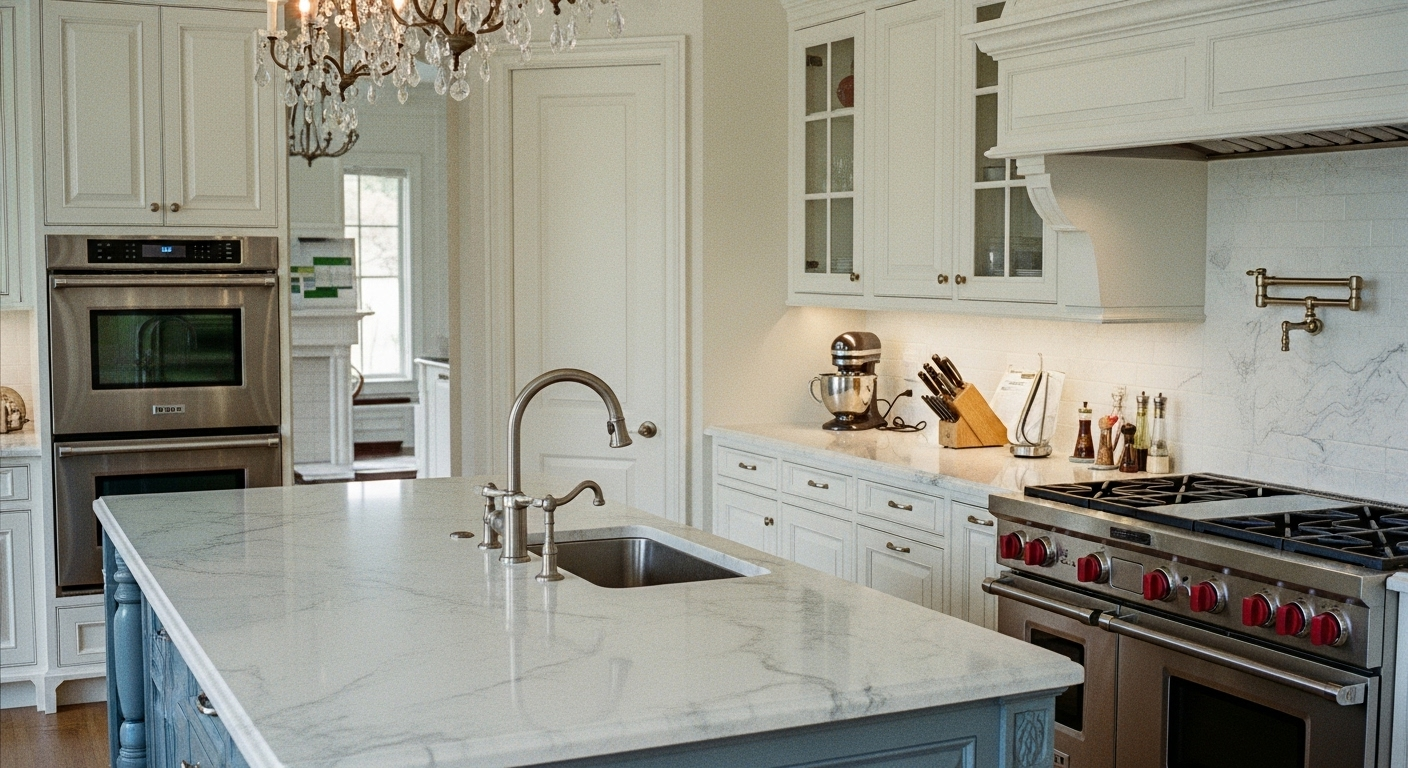
Ceramic cookware offers a PFAS-free alternative to traditional non-stick pans, using sand-based materials that are generally considered safe by toxicologists. However, quality varies significantly - while pure ceramic is time-tested and safe, ceramic-coated cookware may contain undisclosed chemicals including titanium dioxide nanoparticles. Carbon steel presents another safe option, developing natural non-stick properties through seasoning without any coatings. This guide examines the real safety differences, temperature limits, maintenance needs, and durability to help you choose the healthiest cookware for your kitchen.
Introduction
The Growing Concern About Traditional Non-Stick Cookware
If you've been following cookware safety discussions, you've likely heard concerns about traditional non-stick pans. The convenience of easy-release cooking surfaces comes with questions about the chemicals used in their coatings, particularly PFAS (per- and polyfluoroalkyl substances) - often called "forever chemicals" because they don't break down naturally. These concerns have led many home cooks to seek safer alternatives that still deliver reliable cooking performance. Understanding what makes cookware safe involves looking at both the materials used and how they interact with your food during cooking.
The Rise of Ceramic and Carbon Steel Alternatives
As concerns about traditional non-stick cookware grow, ceramic and carbon steel have emerged as popular alternatives. Ceramic cookware uses sand-based materials manufactured without PFAS chemicals, providing a safer non-stick surface that can resist heat, grease, and water [1]. These pans typically last 1-3 years with regular use and work particularly well for cooking eggs, delicate foods, and acidic dishes that would otherwise react with metal surfaces. Carbon steel offers a different approach - these chef-favorite pans develop natural non-stick properties through seasoning while remaining lightweight and responsive to temperature changes [1]. The Misen carbon steel pan exemplifies this versatility, combining quick heating with excellent heat retention for everything from morning eggs to evening stir-fries. The shift away from traditional non-stick has accelerated as major retailers phase out PFAS-coated cookware in favor of alternatives like titanium-based non-stick surfaces [2]. This evolution in cookware reflects growing consumer awareness about the environmental and health impacts of forever chemicals, with several states including Connecticut, Colorado and Vermont banning cookware containing intentionally added PFAS beginning in 2026 [2].
What This Safety Comparison Will Cover
This comparison will help you understand the real safety differences between ceramic and carbon steel cookware. We'll break down ceramic cookware's silica-based coating technology, which provides non-stick properties without PFAS chemicals [3], and explain how carbon steel develops its natural non-stick surface through seasoning [4]. You'll learn about practical temperature limits - ceramic cookware typically stays safe up to 450°F while carbon steel handles temperatures above 800°F [4]. We'll cover the maintenance each type requires and how long you can expect them to last in your kitchen. Most importantly, we'll address the questions that matter for everyday cooking: how ceramic coatings hold up over time, what seasoning really means for carbon steel, and which material works best for your cooking style [4]. From scrambling eggs to searing steaks, you'll understand exactly what each cookware type can (and can't) do safely [3].
Understanding Ceramic Cookware
Pure ceramic cookware fired at 2,500°F offers complete transparency in materials, while ceramic-coated pans may contain undisclosed chemicals manufacturers won't reveal.
What Is Ceramic Cookware and How Is It Made?
Let's break down what ceramic cookware actually is. You'll find two main types in stores: pure ceramic and ceramic-coated. Pure ceramic cookware is the real deal - made entirely from kiln-fired clay that can handle serious heat without breaking down [5]. Think of it like your grandmother's pottery, but engineered for cooking.
Ceramic-coated cookware is different. It starts with a metal core (usually aluminum or stainless steel) that gets sprayed with a ceramic-based coating through what's called a Sol-gel process [5]. This coating - essentially sand and other minerals - gets fired at 400-800°F to create that smooth, non-stick surface [5].
Here's what matters for your cooking: pure ceramic handles extreme temperatures like a champ, while ceramic-coated pans need more careful handling - keep them under 500°F to protect that coating [5]. Both types emerged as safer alternatives to traditional non-stick, giving you PFAS-free cooking surfaces [5].
Types of Ceramic Cookware: Pure vs. Ceramic-Coated
Now that you know the basics, let's dig into what makes each type unique. Pure ceramic cookware is built like a tank - no metal, just clay and minerals fired at an incredible 2,500°F [6]. This creates cookware that laughs at high heat and stays completely free of PFAS chemicals and heavy metals [6]. You can move it from stovetop to oven to grill without worry.
Ceramic-coated cookware plays by different rules. That thin ceramic layer on top of the metal core provides non-stick cooking without PTFE chemicals, but it comes with trade-offs [6]. The coating can wear down over time, and once it does, you might see the metal underneath [7]. Temperature matters too - push it past 500°F and you risk damaging that protective layer [6].
The biggest difference? Longevity. Pure ceramic can become a family heirloom with proper care, while ceramic-coated pans typically need replacing every few years [6]. If you're looking for cookware that can handle serious heat and last for decades, you might also consider a carbon steel pan - it develops natural non-stick properties and actually improves with use.
Common Materials and Coatings Used
Let's talk materials - because what's in your cookware matters. As we covered above, pure ceramic is the simplest: just clay, water, and minerals fired at extreme heat [8]. No mysteries, no complex chemistry.
The ceramic coatings on metal pans get more complicated. They're primarily silicon dioxide (fancy word for sand) mixed with metal oxides - basically minerals that help the coating stick and perform [10]. The good news? Testing shows these ceramic coatings don't contain PFAS chemicals [10].
Traditional non-stick PTFE pans are a different story. Even when labeled "PFOA-free," recent tests found they can still contain measurable amounts of other PFAS chemicals [10]. That's because PFOA is just one of thousands of PFAS compounds - removing one doesn't make the coating PFAS-free.
Understanding these materials helps you make informed choices. Pure ceramic offers transparency and simplicity, ceramic coatings provide PFAS-free non-stick properties, and traditional non-stick... well, that's why many cooks are exploring alternatives.
Marketing Claims vs. Reality
Here's where things get tricky - marketing claims don't always tell the whole story. Testing reveals that "PFOA-free" labels can be misleading. When pans use PTFE coatings, they often contain other PFAS chemicals even without PFOA [10].
The word "ceramic" gets stretched too. Many brands sell what researchers call "quasi-ceramic" - essentially a sol-gel coating sprayed onto aluminum [11]. These coatings can contain undisclosed chemicals including titanium dioxide nanoparticles, which are banned in European food products [11].
Transparency becomes an issue when manufacturers won't share their coating formulas. Without full ingredient lists, you can't know exactly what you're cooking with [11]. Some testing has found concerning levels of titanium in popular ceramic-coated brands, raising questions about what else might be present [11].
Temperature claims deserve scrutiny too. While marketed as heat-resistant, some ceramic coatings can start breaking down at just 500°F (260°C) - much lower than advertised [11]. Traditional ceramic handles extreme heat without issue, but these modern coatings have real limitations.
The good news? Regulators are taking notice. Washington state now requires manufacturers to submit their nonstick ingredients for review [12]. Until we have more transparency, choosing cookware from companies that openly share their materials and processes remains your best bet for safe cooking.
The Safety Profile of Ceramic Cookware
Quality ceramic coatings are PFAS-free and considered safe, but low-quality imports may contain heavy metals or titanium dioxide nanoparticles banned in European food.
Is Ceramic Cookware Non-Toxic? Examining the Evidence
Let's cut through the confusion about ceramic cookware safety. The good news? Toxicology experts generally agree that quality ceramic coatings are safe for everyday cooking. These coatings are primarily made from silicon dioxide and metal oxides - essentially sand-based materials - without any PFAS chemicals [9][11].
Here's what the research tells us: Dr. Joe Zagorski from Michigan State University's Center for Research on Ingredient Safety confirms ceramic coatings are typically free of concerning chemicals and safe for both people and the environment [9]. However, since modern ceramic cookware is relatively new to the market, we're still gathering long-term safety data.
The main safety consideration? Quality matters. While reputable manufacturers create PFAS-free ceramic coatings, some lower-quality imports may contain heavy metals or other concerning substances [11]. Traditional 100% ceramic cookware - the kind made entirely from clay and fired at high temperatures - has proven safe through centuries of use. Just watch out for vintage glazed pieces, especially imports, which historically have contained lead [13].
Potential Concerns with Ceramic Coatings
While ceramic coatings skip the PFAS chemicals, they're not without their own concerns. The biggest issue? Coating quality varies dramatically between manufacturers.
Here's what can go wrong: Low-quality ceramic cookware, especially imports from countries with looser regulations, may contain heavy metals like lead or cadmium [14]. Even quality coatings face durability challenges. Since ceramic coatings are essentially sprayed onto metal bases through a process called sol-gel, deep scratches can expose the underlying aluminum or steel [14][15].
Should you worry about metal exposure? Research shows that even if the base metal peeks through, leaching levels typically stay within safe limits for most people [14]. The real frustration is transparency - or lack thereof. Many manufacturers won't share what's actually in their ceramic coatings, making it tough to know what you're really cooking with [14]. This matters because some coatings contain undisclosed additives that might not be as harmless as advertised [15].
Titanium Dioxide Nanoparticles: Should You Worry?
Here's a concerning discovery: independent testing found titanium dioxide nanoparticles in several popular ceramic-coated cookware brands [11]. Why should you care? The European Union banned titanium dioxide in food products, citing potential cancer risks and concerns about organ accumulation, neurotoxicity, and intestinal inflammation [11].
The science backs up these concerns. A 2016 study showed these nanoparticles can migrate from ceramic pans into your food during cooking [11]. Even more troubling - research confirms that titanium migration increases over time, especially when you cook acidic foods like tomato sauce [16].
What makes this particularly frustrating is the lack of transparency. When pressed for details about their coatings, most manufacturers stay silent about exact formulations [11]. This means you can't verify their safety claims or understand how different substances might interact when they leach into your food. Without research on these combined effects, we're essentially cooking in the dark about potential health impacts [11].
For those seeking truly transparent cookware options, materials like carbon steel offer complete clarity - you know exactly what you're cooking with: 99% iron and 1% carbon.
Heat Resistance and Chemical Stability
Temperature limits matter more than you might think with ceramic cookware. While pure ceramic can handle extreme heat, ceramic-coated pans tell a different story. Keep these under 500°F - push them harder and the coating starts breaking down [9].
Here's the science: that ceramic coating can actually begin melting above 500°F (260°C), potentially releasing substances into your food [11]. Add acidic ingredients like lemon juice or tomatoes, and any titanium in the coating migrates faster into your meal [11].
The bottom line? Even though ceramic coatings beat traditional nonstick for heat tolerance, they still have limits. Manufacturers recommend sticking to low or medium heat for the longest lifespan and safest cooking [17]. Think of it this way - just because your car can hit 120 mph doesn't mean you should drive that fast every day. The same logic applies to your ceramic cookware.
Carbon Steel Non-Stick: A Viable Alternative
Carbon steel's simple composition of 99% iron and 1% carbon develops natural non-stick properties through seasoning, avoiding synthetic coatings entirely.
What Makes Carbon Steel Cookware Different
Carbon steel cookware offers a fundamentally different approach to non-stick cooking. Unlike ceramic-coated pans that rely on artificial layers, carbon steel develops its non-stick properties naturally through use. The material heats quickly like stainless steel but retains heat like cast iron - giving you the best of both worlds in a pan that's surprisingly lightweight and responsive. This versatility makes carbon steel ideal for everything from gently cooking eggs to achieving restaurant-quality sears on meat. While it does react slightly with acidic foods like tomatoes, a well-maintained carbon steel pan can serve your kitchen for decades, compared to ceramic coatings that typically wear out within a couple years.
How Carbon Steel Achieves Non-Stick Properties
Carbon steel develops its non-stick properties through seasoning - a simple process where thin layers of oil transform into a protective coating when heated. Here's how it works: you apply a minimal amount of high smoke point oil (about 1/4 teaspoon works perfectly), buff it until the surface looks dry, then heat the pan until the oil polymerizes. This creates a natural barrier that prevents rust and provides non-stick capabilities that actually improve over time. The key is using just enough oil - too much creates a sticky mess instead of that smooth, slick surface you're after. As you cook, this seasoning builds up gradually, darkening the pan and enhancing its non-stick performance. The result? A cooking surface that can handle extreme heat while releasing food as easily as any modern non-stick pan.
Safety Profile and Materials Analysis
Carbon steel's safety comes from its refreshingly simple composition - just iron with a touch of carbon, no mysterious coatings or chemical additives. The non-stick properties develop naturally through seasoning, avoiding the synthetic coatings that have raised health concerns in recent years. Independent testing has shown that while some cookware contains concerning compounds even when labeled as 'safe,' carbon steel achieves its non-stick surface through the simple polymerization of cooking oils. This seasoned surface remains stable at temperatures that would cause other non-stick coatings to break down and potentially release harmful substances. The only consideration is that carbon steel reacts slightly with highly acidic foods - but for most cooking applications, it provides a stable, safe cooking surface that actually improves with use.
Seasoning Process and Its Impact on Safety
The safety benefits of carbon steel's seasoning go beyond just creating a non-stick surface. As discussed in the previous section, this natural coating forms a protective barrier between your food and the metal, eliminating concerns about synthetic chemicals leaching into your meals. The seasoning can handle extreme temperatures that would damage other non-stick surfaces, making it safer for high-heat cooking techniques. Even if your seasoning appears uneven at first, don't worry - it naturally evens out with use, becoming more protective over time. This process also prevents rust and moisture damage, extending your cookware's lifespan while maintaining its safety profile. For those seeking non-toxic cookware, a well-seasoned carbon steel pan offers peace of mind through its simple, time-tested approach to safe cooking.
Head-to-Head Comparison: Ceramic vs. Carbon Steel
Ceramic pans last 1-2 years with careful use, while carbon steel pans improve with age and can be passed down through generations.
Performance and Heat Conductivity
Here's how ceramic and carbon steel perform in real kitchen situations. Ceramic-coated pans work best at low to medium heat - think eggs, pancakes, and gentle sautéing. Keep them under 500°F to protect the coating [25]. They distribute heat evenly, which is great for delicate cooking, but you'll need to baby them a bit.
Carbon steel? That's a different story. These workhorses heat up quickly and hold that heat like a champ. You can crank them up past 650°C for a killer sear, then drop the temperature for more delicate work [26]. Our carbon steel pan combines this versatility with pre-seasoning, so you get those benefits right out of the box.
The bottom line: if you're mostly cooking at lower temps and want foolproof non-stick, ceramic works well. But if you want one pan that can handle everything from screaming-hot sears to gentle egg cookery, carbon steel wins hands down [26].
Durability and Longevity Differences
Let's talk lifespan. A ceramic-coated pan starts strong - super slick, easy to clean. But here's the catch: that coating wears down. Most ceramic pans lose their mojo after 1-2 years of regular use [27]. Once those micro-scratches appear, there's no fixing them.
Carbon steel? It's built to outlast you. Seriously, these pans get passed down through generations. The more you use them, the better they get. That's because the seasoning isn't just a coating - it's part of the pan itself [28]. Scratch it? No problem. Just re-season and keep cooking.
Think of it this way: ceramic pans are like that non-stick you replace every couple years. Carbon steel is the pan you'll still be using in 20 years, and it'll cook better than the day you bought it [27].
Maintenance Requirements for Safety
Keeping your cookware safe means understanding what each type needs. With ceramic-coated pans, baby that surface - use silicone or wooden utensils only. Metal tools will scratch the coating, and once it's damaged, you're looking at replacement time [25]. Skip the dishwasher too - that high heat isn't doing the coating any favors.
Carbon steel maintenance is different but simpler. As we covered in our care guide (see "Proper Care and Maintenance of Carbon Steel" section), these pans need basic TLC: hot water rinse, quick dry, light oil coating. No soap needed - in fact, soap strips the seasoning you're working to build [30]. Got stuck food? A little kosher salt and elbow grease does the trick.
Here's the safety bottom line: when ceramic coating shows deep scratches or starts flaking, toss it. But carbon steel? A little surface rust or uneven seasoning is fixable - just scrub and re-season [29].
Environmental Impact Considerations
Let's be real about the environmental impact. Pure ceramic cookware (the solid clay type) wins big here - these pieces literally last generations. One pan, decades of use, minimal waste [31].
But ceramic-coated pans? That's a different story. When that coating fails after a year or two, you've got a pan that's tough to recycle - it's part metal, part ceramic coating. Most end up in landfills [31]. Sure, the manufacturing process produces less CO2 than traditional non-stick, but when you're replacing pans every couple years, those benefits disappear fast.
Some companies are trying to do better with recycling programs and sustainable manufacturing. But here's the thing: the most sustainable pan is the one you never have to replace. Carbon steel and pure ceramic both nail this - buy once, use forever. That's sustainability that actually makes sense [32].
Practical Considerations for Health-Conscious Cooks
Low to medium heat, wooden utensils, and regular inspection for chips or scratches keep ceramic cookware performing safely throughout its lifespan.
Best Practices for Safe Use of Ceramic Cookware
Want to keep your ceramic cookware safe and performing well? Here's what you need to know. Skip the metal utensils - they'll scratch that ceramic coating faster than you can say "non-stick." Stick with wooden, bamboo, or silicone tools instead [34]. Yes, exposed stainless steel won't hurt you, but scratched coatings are harder to clean and won't release food as easily [33].
Keep those temperatures in check too. Low to medium heat is your friend here - cranking up the heat just breaks down the coating faster [33]. Make a habit of checking your pans regularly. See chips, deep scratches, or worn spots? Time for a replacement to avoid any metal leaching concerns [35].
Got vintage or handmade ceramic pieces? Be extra careful. Grab a lead-testing kit from your hardware store, or look for "Not for Food Use" warnings [34]. When shopping for new cookware, stick with reputable brands from countries with strict safety standards - some imports can contain concerning levels of heavy metals [34].
Proper Care and Maintenance of Carbon Steel
Carbon steel pans need some love, but the payoff is worth it. Here's your maintenance routine: After cooking, rinse with hot water and use a non-metallic brush to clean - no soap needed, as it strips the seasoning [36]. Got stubborn bits stuck on? Just simmer some water for a few minutes, then scrape with a metal spatula [36].
The key to rust prevention? Dry thoroughly right after washing, then warm the pan on the stove and add just a few drops of neutral oil. Wipe until it looks dry - less is more here [37]. If you're storing your carbon steel pan, make sure it's bone dry first, especially if you live somewhere humid [36].
Hit a rust spot? No worries - buff it out with steel wool and re-season that area [37]. Two absolute no-nos: never soak your pan or toss it in the dishwasher. Both are guaranteed rust recipes [38]. Your pan should feel smooth to the touch. If it's sticky or rough, you used too much oil during seasoning - just scrub it clean and start fresh [37].
When to Replace Your Cookware for Safety
Knowing when to replace cookware isn't just about performance - it's about safety too. For ceramic pieces, those tiny cracks from thermal shock matter more than you think. Even hairline fractures compromise the pan's integrity, so don't risk it [39]. Ceramic-coated pans need replacing the moment you see deep scratches or chips exposing the metal underneath [40].
Notice your pan heating unevenly or developing hot spots? That's your cue to shop for a replacement [39]. Carbon steel pans are tougher - only replace them if the seasoning won't come back despite your best efforts, or if you spot deep pitting or cracks in the cooking surface [39].
Traditional non-stick pans have clear warning signs: food sticking constantly, visible scratches or chips, or warping that leaves them wobbling on the stovetop [40]. Stainless steel cookware rarely fails, but if you see layers separating (especially at the rim), it's time to retire that pan [39]. As for cast iron? These workhorses last generations, but extensive rust that won't clean up or significant cracks mean it's time to let go [39].
Matching Cookware Type to Your Cooking Style
Your cooking style should drive your cookware choice. Love making quick weeknight dinners? Ceramic-coated pans are your best friend - they're non-stick right out of the box and perfect for eggs, delicate fish, and light sautéing [41].
But if you're the type who loves building flavors through searing and high-heat cooking, carbon steel is where it's at. These pans heat up fast like stainless steel but hold heat like cast iron - giving you incredible control whether you're gently sautéing vegetables or getting that perfect crust on a steak [30].
Think about maintenance too. Ceramic pans are low-maintenance but typically need replacing after a couple years. Carbon steel requires more attention - regular seasoning and proper drying - but rewards you with decades of improved performance [30]. Many home cooks find having both types makes sense: grab the ceramic for those rushed mornings, reach for carbon steel when you want to create something special [30].
- Quality ceramic cookware is PFAS-free and generally safe, but coating transparency varies - stick with reputable brands that disclose their materials
- Pure ceramic (100% clay) offers the safest option with centuries of proven use, while ceramic-coated pans may contain undisclosed chemicals including titanium dioxide nanoparticles
- Carbon steel provides complete material transparency (99% iron, 1% carbon) and develops natural non-stick properties through seasoning without any coatings
- Temperature limits matter: keep ceramic-coated pans under 500°F to prevent coating breakdown, while carbon steel handles extreme heat above 650°C
- Ceramic-coated pans typically last 1-2 years, while carbon steel and pure ceramic can last generations with proper care
- For health-conscious cooks, carbon steel or pure ceramic offer the best long-term safety and sustainability compared to ceramic-coated options
- Choose ceramic for low-maintenance, low-heat cooking; select carbon steel for versatility, high-heat searing, and lifetime durability
- https://cookdinehost.com/blogs/articles/carbon-steel-vs-ceramic-cookware-which-should-you-choose?srsltid=AfmBOooCbWan1fDr22Gh4gh4m6-nY4VqUEYLOszdRsHF1G3lhcvZUjPL
- https://foodprint.org/blog/what-to-know-about-nonstick-cookware/
- https://www.seriouseats.com/best-non-toxic-cookware-7553352
- https://www.debuyer-usa.com/blogs/guides/carbon-steel-vs-ceramic-pans-which-is-right-for-your-kitchen?srsltid=AfmBOoqKyh0-WBdF71I4XqufsC1t5pZ2FIcRZdI1-uXHk9h3eFtJZGHL
- https://xtrema.com/blogs/blog/understanding-what-ceramic-cookware-is-made-of?srsltid=AfmBOoqqRVfp4ErWn9ksgQIafQlPTN8SmTm-t5MgjZCO18bXD-7gfxA7
- https://xtrema.com/blogs/blog/ceramic-vs-ceramic-coated-cookware?srsltid=AfmBOoq30ttzgq66xK6XgJuK21u3yxHP5mK4rTX8nFxCB0e6_6NNxIWH
- https://ceraflameus.com/pages/why-100-ceramic-cookware?srsltid=AfmBOorRtJFUcbT8Gyz-n7z9ry5t5ga1GiKPqd-2BS4CGxeOB034gKoQ
- https://fromourplace.co.uk/blogs/care-use/is-ceramic-cookware-safe-what-you-need-to-know?srsltid=AfmBOoqMDBUk6OlLmRgD-k5P9iG4f6l6VOaxU-l4W1JNY_fxzoOSr0C9
- https://www.today.com/shop/is-ceramic-cookware-safe-rcna200110
- https://www.consumerreports.org/toxic-chemicals-substances/you-cant-always-trust-claims-on-non-toxic-cookware-a4849321487/
- https://www.theguardian.com/lifeandstyle/2025/jun/09/ceramic-nontoxic-cookware
- https://www.ehn.org/health-claims-unravel-as-nontoxic-ceramic-pans-come-under-scrutiny
- https://pmc.ncbi.nlm.nih.gov/articles/PMC5135532/
- https://thecookwareadvisor.com/ceramic-coated-cookware-safety-secrets-that-no-one-will-tell-you/
- https://millionmarker.com/blogs/blog/is-ceramic-cookware-safe-to-use
- https://www.sciencedirect.com/science/article/abs/pii/S0956713517305819
- https://fromourplace.co.uk/blogs/care-use/is-ceramic-cookware-safe-what-you-need-to-know?srsltid=AfmBOoqYFRLH864cFk69uwxrCuv9YKeQddkQ0IJK6fEXwZ0qv8IBPyAJ
- https://www.debuyer-usa.com/blogs/guides/carbon-steel-vs-ceramic-pans-which-is-right-for-your-kitchen?srsltid=AfmBOoqgke5UgsPxOF-TWJchryAMa0g0VksyUvFEZI1bmYExm89FgTaK
- https://brass-steel.com/blogs/tips-and-guides/how-to-compare-carbon-steel-vs-ceramic-pans-non-toxic-cookware-choices?srsltid=AfmBOopk_Vh0448KW72jBetG1NsUd_yJ4qQ2NUHR5W8gjN40PjicCN51
- https://www.seriouseats.com/how-to-season-carbon-steel-pans
- https://misen.com/pages/carbon-care?srsltid=AfmBOorzUi4aWtHiGXZSDG_G4DdAx6Aidp0UzWOXOVEEjWQP-towbqs7
- https://gastrotools.com/blogs/guides/carbon-steel-guide-questions-and-answers-faq
- https://pmc.ncbi.nlm.nih.gov/articles/PMC10386729/
- https://santabarbaraforge.com/blogs/the-blacksmiths-journal/how-to-season-care-for-a-carbon-steel-pan?srsltid=AfmBOoposxDy50ZfRish_LqHnSA3xvnKATxPLJCdfHRy_guwoAfHggC_
- https://www.organicauthority.com/guide/stainless-steel-vs-ceramic-cookware
- https://www.debuyer-usa.com/blogs/guides/carbon-steel-vs-ceramic-pans-which-is-right-for-your-kitchen?srsltid=AfmBOops1wsgZO_UQzo2B2ywxN98H-UiSmJ01fuiZ0Qp6AWYGefeS74t
- https://brass-steel.com/blogs/tips-and-guides/how-to-compare-carbon-steel-vs-ceramic-pans-non-toxic-cookware-choices?srsltid=AfmBOopeu5TqxpTw3ITL-wR0WAjZLDkRqB2WZtUMylUgiXu9CUxMerO6
- https://www.debuyer-usa.com/blogs/guides/carbon-steel-vs-ceramic-pans-which-is-right-for-your-kitchen?srsltid=AfmBOoobsJ2y7XLlHz3iSrd1tgoDFTbOQwm0E-hoo7M2snn0luAmAG-S
- https://cookdinehost.com/blogs/articles/carbon-steel-vs-ceramic-cookware-which-should-you-choose?srsltid=AfmBOopD68ynTIoSQrNreC548pThZ4n-tTRAHtFRYy1oMqKKjXDsxZ-r
- https://www.goodfoodstories.com/nonstick-pans/
- https://www.organicauthority.com/guide/ceramic-cookware-pros-and-cons
- https://www.foodnetwork.com/how-to/packages/shopping/sustainable-and-eco-friendly-cookware-brands
- https://www.health.com/safest-type-of-cookware-8425731
- https://www.foodnetwork.com/healthyeats/healthy-tips/are-ceramic-pots-pans-cookware-safe-to-cook-use
- https://www.canada.ca/en/health-canada/services/household-products/safe-use-cookware.html
- https://www.marthastewart.com/8238553/how-care-for-carbon-steel-pan
- https://misen.com/pages/carbon-care?srsltid=AfmBOopCxPh7BTKlj1xVeKIhhLAT4-w_Z_8lxs7qptp1dbidX_2PewjV
- https://www.lodgecastiron.com/pages/cleaning-and-care-carbon-steel?srsltid=AfmBOori2WM5x5G6Ht_EGPu8KmmdEu8IdN01JpXmLmarJylBbQTF8SMh
- https://nephcure.org/safe-kitchen-choices-a-comprehensive-guide-to-non-toxic-cookware/
- https://www.momscleanairforce.org/mom-detective-pots-and-pans/
- https://www.debuyer-usa.com/blogs/guides/carbon-steel-vs-ceramic-pans-which-is-right-for-your-kitchen?srsltid=AfmBOorsdKfmFxAjWgSL73vB1MF1Egth1bH3_CStKIXkJSbXzSJCjSJM
- https://www.healthline.com/health/safe-cookware
- https://www.bonappetit.com/story/the-best-nontoxic-cookware-tested-by-our-experts?srsltid=AfmBOorHWln6UGAwAyB8JGfJZmSXx131ShkutPhGGJx4bksqqwY7iLE9
- https://mamavation.com/product-investigations/safest-cookware-stainless-steel-cast-iron-ceramic-bakeware.html
